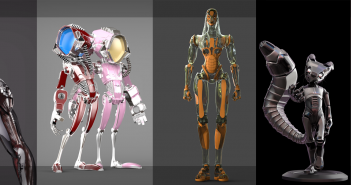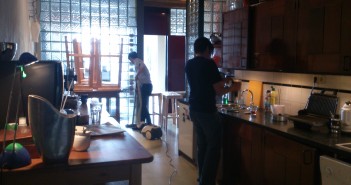1000 cars and 37,000,000 vertices smashing into each other - that's worth a post on BlenderNation!
James Candy writes:
My YouTube channel Classy Dog Films recently passed 1,000 subscribers, and I wanted to do something special for our Blender fans. I decided to try something I hadn't seen before, a rigid body car simulation. It took approximately 250 hours to render, with over 50 hours spent on the final shot alone. For anyone interested, there are exactly 1,002 cars in the final shot, totaling 37,000,000 vertices!




11 Comments
Oh, holy cow, I got a good belly-laugh outta that one! On the technical side, great chromatic abrasion around the edge of that circular fisheye shot...
Thanks, Eric! Glad you enjoyed it! And I'm glad someone noticed the CA on the fisheye shot! It just felt a little too perfect coming out of Cycles.
I got used to chromatic aberration over the years but in this case maybe chromatic abrasion is more appropriate.
really well executed! love the shots once the cars start raining. it might not even be intentional, but there is kind of a chilling commentary of consumer culture running through it as well.
I never would have thought of that until you pointed it out. I'll just pretend that was part of my plan all along! Glad you liked it!
How many vertices were in the red car alone at the beginning?
In the beginning where we only see one car, I used Veti's original model (with a little bit of clean up in some places, plus different tires and wheels), which is about 672,000 vertices. Once you start seeing all the cars piling up, that's a low-poly version, only about 36,000 verts- and a lot of that is still in the wheels. The actual low-poly body is only 13,666 verts, making it light enough to run in the rigid body simulator without using a proxy object.
We did a similar thing but with balloons...
https://scontent-b-ams.xx.fbcdn.net/hphotos-xpa1/v/t1.0-9/10475520_498411720291213_7473064557796090790_n.jpg?oh=9683254bfb9171db351e2eec863fea2e&oe=545C0474
That's cool, Michael! The balloons look very realistic.
Once I tried to do a massive simulation with 1000 and more objects, but blender just crashed if I started to bake so many objects. Any advice?
I would try to reduce the polycount as much as possible. Also, using convex hull bounds may be a lot quicker than mesh bounds. You may also want to create a low-poly version of the object, then parent the original (higher poly) mesh to the low poly and place it on a different layer. Only the low-poly mesh will be part of the simulation, the high-poly will just follow it's movements. Make sure both objects are selected and duplicate them as much as needed. Then hide your high-poly layer, and run your simulation. When you render, turn the high-poly back on and hide the low-poly layer. This is what I did for my simulation.